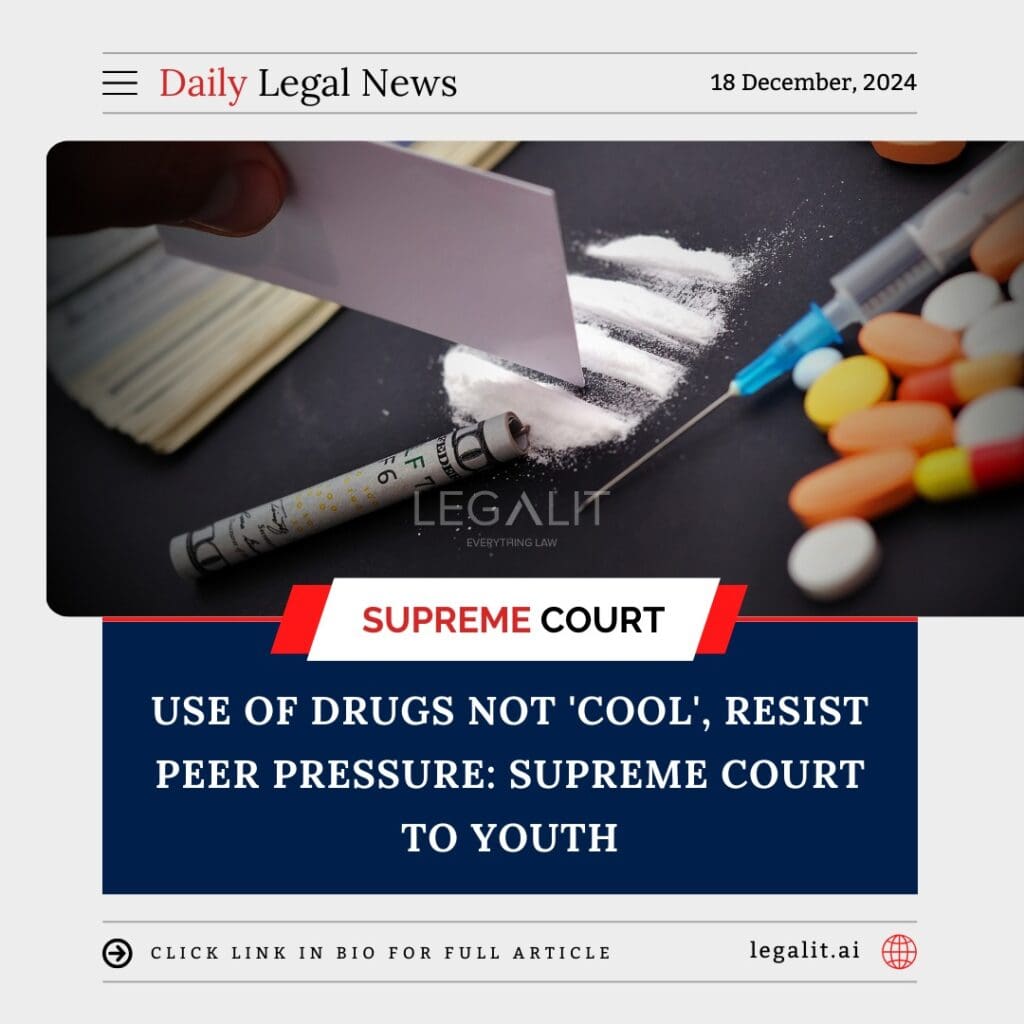
The Supreme Court of India has issued a strong message to the youth, urging them to resist the peer pressure of using drugs and highlighting that drug abuse is not “cool.” The court’s remarks came in response to growing concerns over the increasing use of narcotic substances among young people and the negative impact it has on their health and future. The Supreme Court has called for awareness campaigns to educate the youth about the dangers of drugs and emphasized the importance of making informed choices.
Background:
The issue of drug abuse among the youth has been a significant concern in India, with reports showing rising instances of substance use among students and young adults. In recent years, the government and various organizations have launched several initiatives to curb drug abuse, but the problem continues to persist, especially in educational institutions and urban areas.
The Supreme Court’s intervention in this matter comes as part of a larger effort to address the growing crisis and to ensure that young people understand the long-term consequences of drug abuse. The court has expressed concern over the increasing number of cases related to drug trafficking and substance misuse, which can lead to severe health issues, criminal behavior, and damage to the societal fabric.
Key Arguments:
- Court’s Stand:
- The Supreme Court stressed that drug abuse is harmful and that young people should understand its negative effects on physical and mental health.
- The court called for more proactive measures, including peer-led campaigns, to combat the culture of drug use among the youth.
- The court emphasized that drugs are not a means of “fitting in” with peers, and urged young people to make decisions that safeguard their well-being and future.
- Respondent’s Stand:
- Some respondents in the case argued that drug use is often glamorized in media and entertainment, which leads to the perception that it is acceptable or “cool.”
- Others pointed out that young people are often under intense social pressure to conform to certain behaviors, including substance use, which they may see as a way to gain acceptance in their peer groups.
Supreme Court’s Observations:
The Supreme Court bench, led by Chief Justice of India, highlighted the role of education, awareness, and positive peer influence in reducing drug abuse among the youth. The court noted that it is essential for young people to be given the correct information about the dangers of drug use and to be empowered to make choices that do not harm their health or society.
The court also observed that societal attitudes towards drug use need to change, and there should be a greater emphasis on fostering healthy, alternative social activities that do not involve substances.
Legal and Policy Implications:
The Supreme Court’s intervention is expected to lead to a push for more targeted educational programs and community outreach initiatives focused on preventing drug abuse. The court may also encourage the government to introduce policies that address the issue of substance abuse among youth through counseling services, rehabilitation programs, and stricter enforcement of anti-drug laws.
If these initiatives are implemented effectively, they could lead to a decrease in the number of young people involved in drug-related offenses and reduce the overall demand for narcotics in the country.
Broader Context:
The Supreme Court’s remarks are part of a broader national conversation about the health and well-being of young people. In recent years, there has been an increasing recognition of the importance of mental health awareness, addiction prevention, and resilience-building programs for youth. The court’s statement contributes to these ongoing efforts by highlighting the need for young people to be made aware of the dangers of drugs and to resist pressures that may harm their futures.
Conclusion:
The Supreme Court’s statement serves as an important reminder to the youth that drug use is not a harmless or glamorous activity. By urging young people to resist peer pressure and make informed decisions, the court has called for a collective effort to address the growing problem of substance abuse. The case underscores the need for education, awareness, and strong community support to guide young people toward healthier and more fulfilling lives.